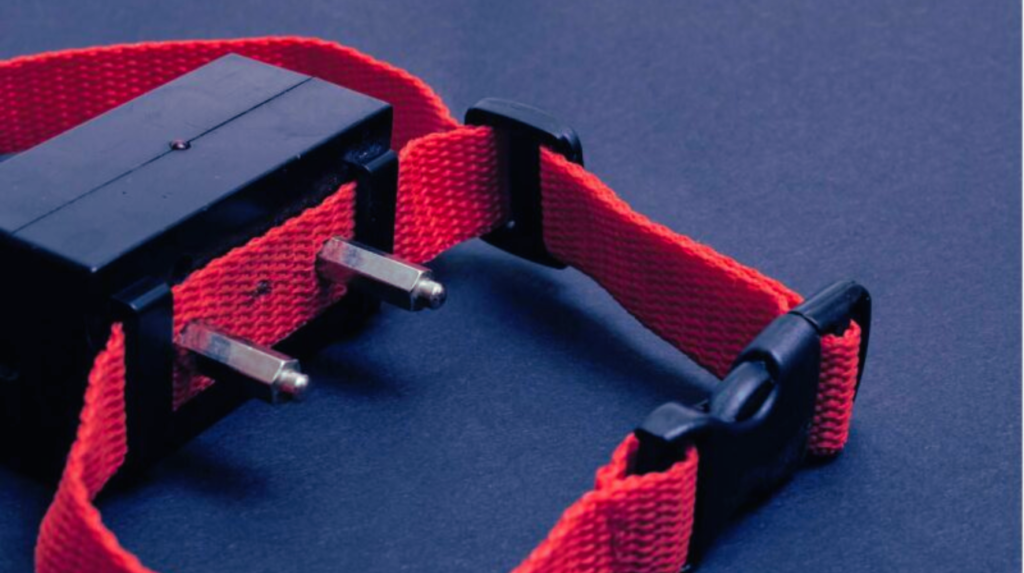Barking is a natural behavior in dogs, but excessive barking can become a nuisance for owners and neighbors. When traditional methods like training and positive reinforcement don’t work, many dog owners turn to devices like vibration collars to manage their dog’s behavior. But, do vibration collars work for barking?
Discover the perfect collar size for an Anatolian Shepherd Dog to ensure comfort and security for your furry friend.
We will explore how vibration collars function, whether they are effective in reducing excessive barking, and if they are a safe, humane solution for your dog.
Blog Highlights
ToggleUnderstanding Vibration Collars for Dogs
Before we dive into whether vibration collars work for barking, it’s essential to understand how they function. Vibration collars are wearable devices that emit a vibration when triggered by a specific stimulus, often a barking sound.
Unlike shock collars, which deliver an electrical shock, vibration collars provide a less invasive form of correction. The vibration typically startles the dog, interrupting the behavior, with the goal of teaching them to stop barking.

Learn more about the unique double-layered coat of an Anatolian Shepherd and how to care for it effectively.
Vibration collars are usually adjustable, allowing owners to control the intensity of the vibration. They may also come with various modes, such as sound sensors or manual controls, depending on the model.
The idea behind the vibration is that it will capture the dog’s attention and disrupt the behavior, leading to a reduction in excessive barking over time.
How Do Vibration Collars Work for Barking?
Vibration collars are designed to work based on the principle of negative reinforcement. When a dog barks excessively, the collar emits a vibration, which serves as a form of aversive stimulus. The theory is that the dog will associate the vibration with their barking behavior and, over time, stop barking to avoid the uncomfortable sensation.
When you use a vibration collar for barking, it is important to follow a consistent training routine. The device doesn’t work in isolation; it should be paired with positive reinforcement methods, such as rewarding your dog when they remain quiet. Over time, this combination of vibration stimulation and positive reinforcement encourages your dog to learn when barking is acceptable and when it isn’t.
Do Vibration Collars Work for Barking?
The short answer is: yes, vibration collars can work for barking, but they are not a one-size-fits-all solution. Their effectiveness depends on several factors, including the dog’s temperament, the consistency of training, and how the collar is used. Let’s break down the pros and cons of vibration collars for barking.

For insights on whether Pomeranians should wear a collar, including considerations for safety and alternatives, check out this informative article.
Pros of Using Vibration Collars for Barking
- Non-Invasive Approach: Vibration collars provide a gentle way to correct unwanted behavior compared to traditional shock collars. The vibrations are not harmful but simply serve as a distraction to break the barking cycle.
- Safe for Most Dogs: When used correctly, vibration collars are considered safe for most dogs, even those with sensitive skin or older dogs. The lack of an electrical shock makes them a safer alternative for many owners concerned about their pet’s well-being.
- Adjustable Settings: Many vibration collars come with adjustable levels of intensity, allowing you to tailor the collar to your dog’s needs. You can start with lower intensities and increase them only if necessary, ensuring that your dog’s experience is not overwhelming.
- Effective for Some Dogs: Vibration collars can be particularly effective for dogs that are highly responsive to tactile stimulation. If your dog is sensitive to touch, the vibration can be a sufficient deterrent to reduce barking.
Cons of Using Vibration Collars for Barking
- Not Effective for All Dogs: Some dogs may not respond to the vibrations or may become desensitized over time. For these dogs, the collar may lose its effectiveness, and alternative solutions may need to be considered.
- Training Time: Vibration collars should not be seen as a quick fix. It can take time for your dog to associate the vibration with their barking, and training consistency is key to success. Owners who don’t invest time in proper training may see limited results.
- Potential for Overuse: If the vibration collar is used incorrectly or too frequently, it may cause unnecessary stress or anxiety in the dog. Overuse can lead to confusion, and instead of correcting barking, it could lead to behavioral problems like fear or aggression.
- Not a Complete Solution: While vibration collars can reduce barking, they should not be relied upon as the sole method of training. It is essential to combine the use of a vibration collar with other positive reinforcement techniques, such as rewarding good behavior, to effectively manage barking.
Factors That Affect the Effectiveness of Vibration Collars for Barking
While vibration collars can be effective, their success depends on several factors that can influence how well they work for your dog.

1. The Dog’s Temperament
Some dogs are more sensitive to stimuli like vibration, while others may be more stubborn or less responsive. Highly excitable or anxious dogs might find the vibration startling and may respond quickly to the collar, while others may not even notice it. It’s important to gauge your dog’s reaction to the collar and adjust your training accordingly.
2. Consistency of Training
For a vibration collar to work, it must be used consistently as part of a broader training plan. When your dog barks excessively, the collar should be activated immediately to make the connection between the behavior and the correction. Inconsistent use can confuse the dog and make it harder for them to associate the vibration with barking.
3. Collar Fit and Settings
The fit of the collar is also crucial. If the collar is too loose, the vibrations may not be as effective; if it’s too tight, it may cause discomfort. You should adjust the collar to fit snugly but comfortably around your dog’s neck. Additionally, finding the right vibration intensity is important. Start with the lowest setting and increase it only if necessary to avoid overwhelming your dog.
4. The Cause of the Barking
Understanding why your dog is barking is another key factor. Dogs bark for various reasons—whether it’s due to excitement, fear, territorial behavior, or attention-seeking. Vibration collars are most effective when used to curb attention-seeking or nuisance barking.
However, if the barking is due to anxiety or a deeper behavioral issue, the collar may not address the root cause and may need to be used in conjunction with other behavior modification techniques or professional training.
For a comprehensive guide on what kind of harness is best for a Pomeranian, including comfort and safety tips, check out this article.
Alternatives to Vibration Collars for Barking
While vibration collars can work for barking in some cases, there are other methods and devices that can help control excessive barking. Some alternatives include:

- Positive Reinforcement Training: Rewarding your dog for being quiet is one of the most effective ways to stop excessive barking. When your dog stops barking on command, reward them with treats, praise, or affection.
- Bark Control Collars (Sound or Spray): Sound-based collars emit a noise when the dog barks, or spray collars release a burst of citronella or unscented spray. These devices may be less intrusive than vibrations and could be a better option for some dogs.
- Behavioral Training: In some cases, working with a professional dog trainer to address the underlying causes of barking may be the best solution. A trainer can help identify triggers for your dog’s barking and create a personalized training plan.
- Environmental Adjustments: Sometimes, dogs bark due to environmental factors like outside noise, boredom, or lack of exercise. Providing more stimulation, exercise, and mental enrichment may help reduce barking.
Conclusion: Do Vibration Collars Work for Barking?
So, do vibration collars work for barking? Vibration collars can work for barking, but their effectiveness largely depends on the individual dog and the training techniques employed. When used properly, vibration collars offer a safe, humane alternative to shock collars and can help reduce excessive barking. However, they should not be seen as a standalone solution.
Consistent training, a proper fit, and an understanding of your dog’s behavior are all essential to successfully using a vibration collar for barking. Discover if the American Eskimo is a guard dog and learn about its suitability for protecting your home.
If you decide to use a vibration collar, be sure to combine it with other positive reinforcement methods and, if necessary, seek professional advice to ensure the well-being of your dog. Always prioritize your dog’s comfort and safety, and remember that any training device is just one part of a comprehensive approach to behavioral modification.







